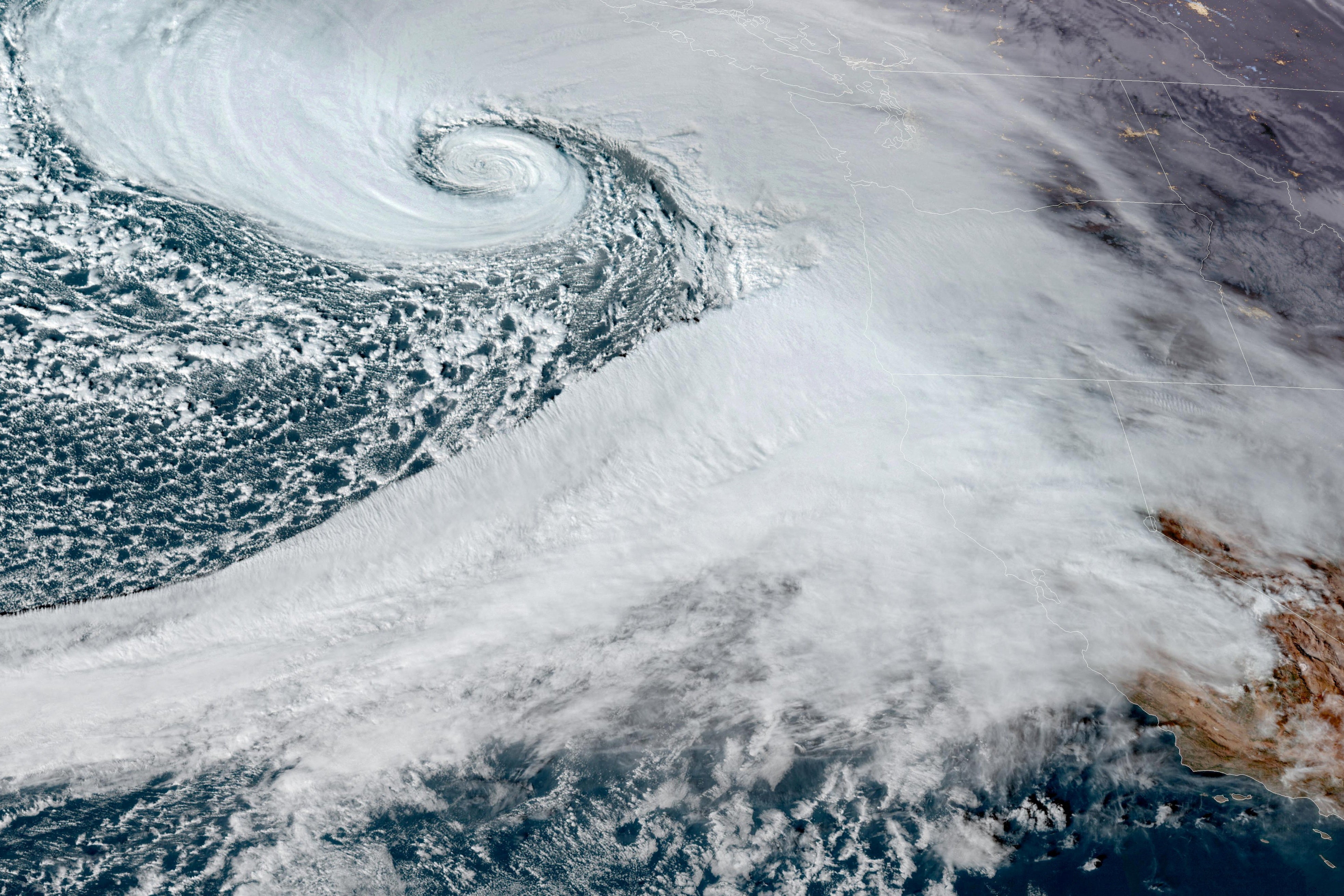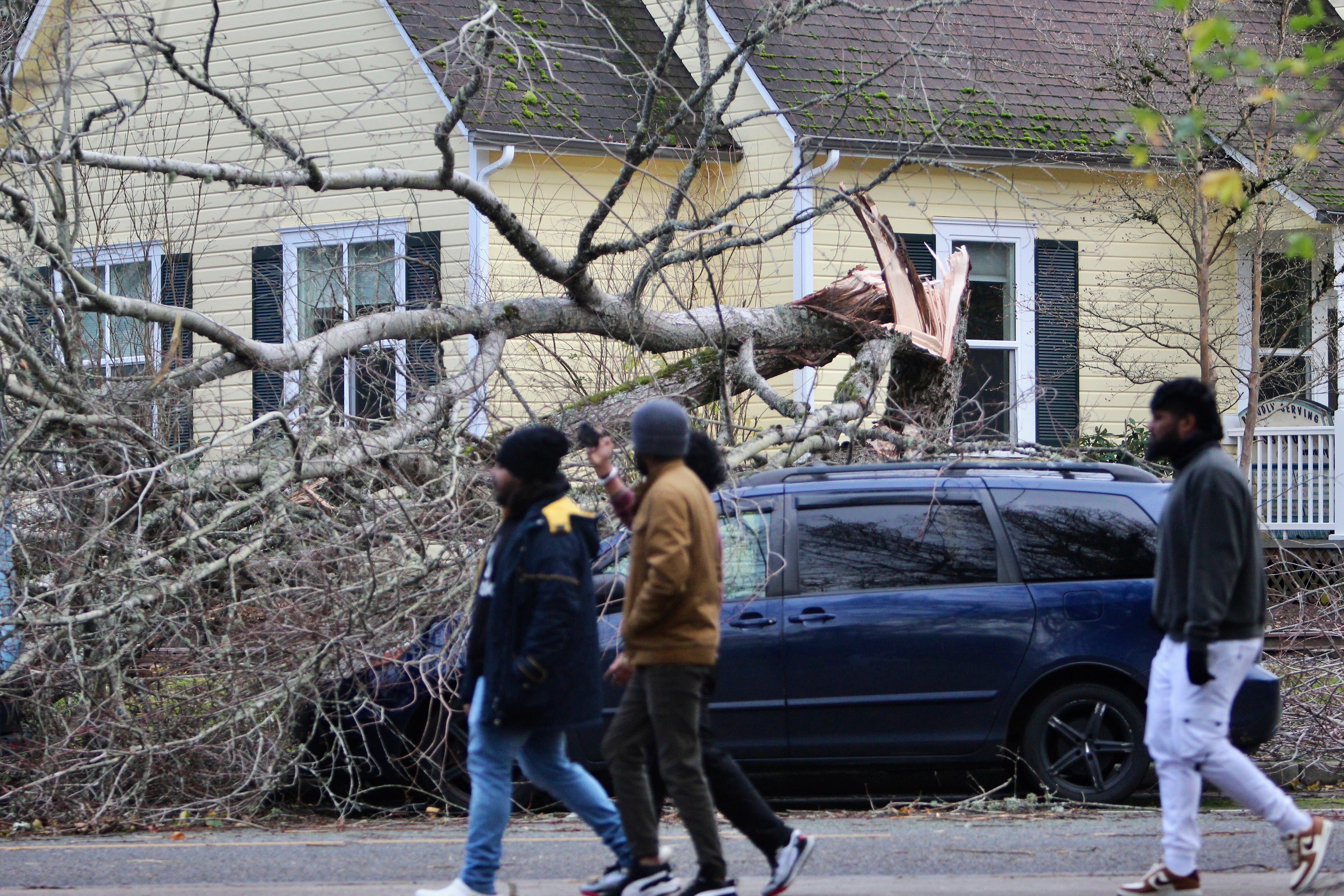What is a ‘bomb cyclone’? The powerful storm battering the West Coast
At least two people have died and hundreds of thousands have been left without power after the bomb cyclone slammed into Seattle
A powerful storm is churning through the West Coast and bringing with it a scary-sounding weather term: a bomb cyclone.
Bomb cyclone is a term used by weather enthusiasts to describe a process that meteorologists usually call bombogenesis. It’s the rapid intensification of a cyclone in a short period of time, and it can happen during powerful storms such as the one tearing through Washington into northern California this week.
But what is a bomb cyclone, why does it happen, and why are these big storms so feared?
What is a bomb cyclone?

A bomb cyclone occurs during the rapid intensification of a cyclone located between the tropics and the polar regions, according to the National Oceanic and Atmospheric Administration. It can happen when a cold air mass collides with a warm air mass, which is something that can occur over ocean waters, the agency says.
The measurement needed to determine whether a cyclone can be classified a bomb cyclone can be tricky, but it largely concerns a swift drop in pressure. Atmospheric pressure is measured in millibars by the National Weather Service.
If a storm decreases 24 millibars or more in 24 hours or less, it can be considered a bomb cyclone, said Stephen Baron, a forecaster with the weather service in Gray, Maine.
“I would say rapid intensification of hurricanes is one of the more common times we see it,” Baron said. “We do see it with Nor’easters occasionally.”
Why is it happening on the West Coast?

At least two people have died and hundreds of thousands have been left without power after the bomb cyclone slammed into Seattle, Washington, on Tuesday night as it charts a destructive path through to northern California and Oregon.
The storm arrived as the region experiences a “significant” atmospheric river, which is a long plume of moisture, over the Pacific Ocean.
Heavy rains and strengthening winds battered the Bay Area on Tuesday night, with the winter storm reaching maximum intensity on Wednesday, the Weather Prediction Center announced. Bruising winds with speeds surpassing 77mph wreaked havoc in the western Washington on Wednesday with high surf along the Pacific Northwest coastline throughout the day.
The WPC has also warned of life-threatening flash flooding and rock slides through the Golden State, with rainfall expected to peak on Thursday, reaching up to 16 inches.
The “anomalously strong” storm intensified swiftly enough for it to be considered a bomb cyclone, the agency declared.
When else has it happened?
Bomb cyclones can happen in many places, and aren’t unique to the West Coast. They can occur in several parts of the world’s oceans, including the Northwest Pacific and North Atlantic.
They have been associated with major weather events all over the country in recent years. Hurricane Milton, which made landfall in Florida last month as a Category 3 hurricane, was a recent example of a bomb cyclone, Baron said.
A bomb cyclone in 2018, which helped popularize the term on social media, brought snow to the Southeast and winds that were close to hurricane force.
Another in 2022 brought extreme weather and bitter cold to much of the country.